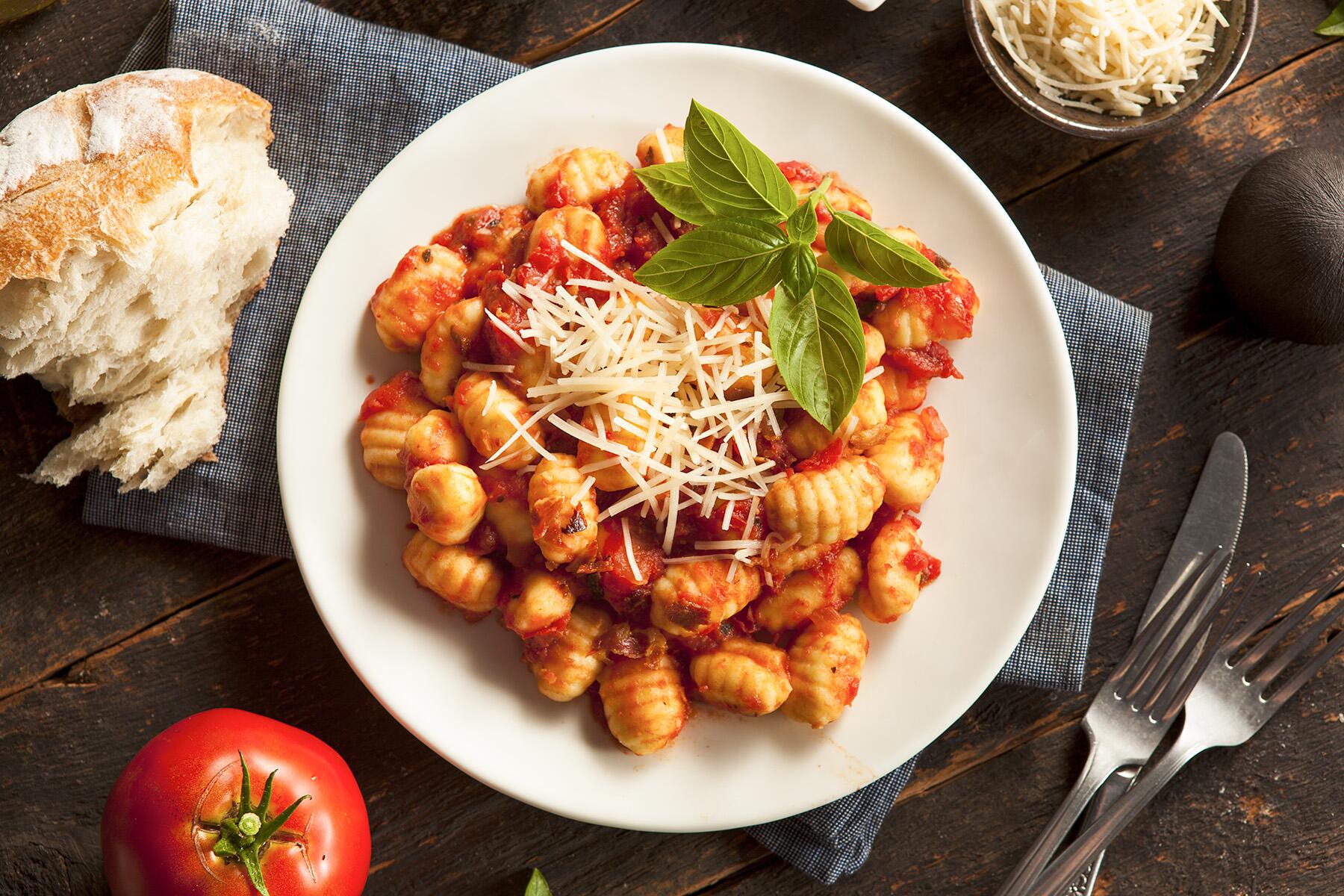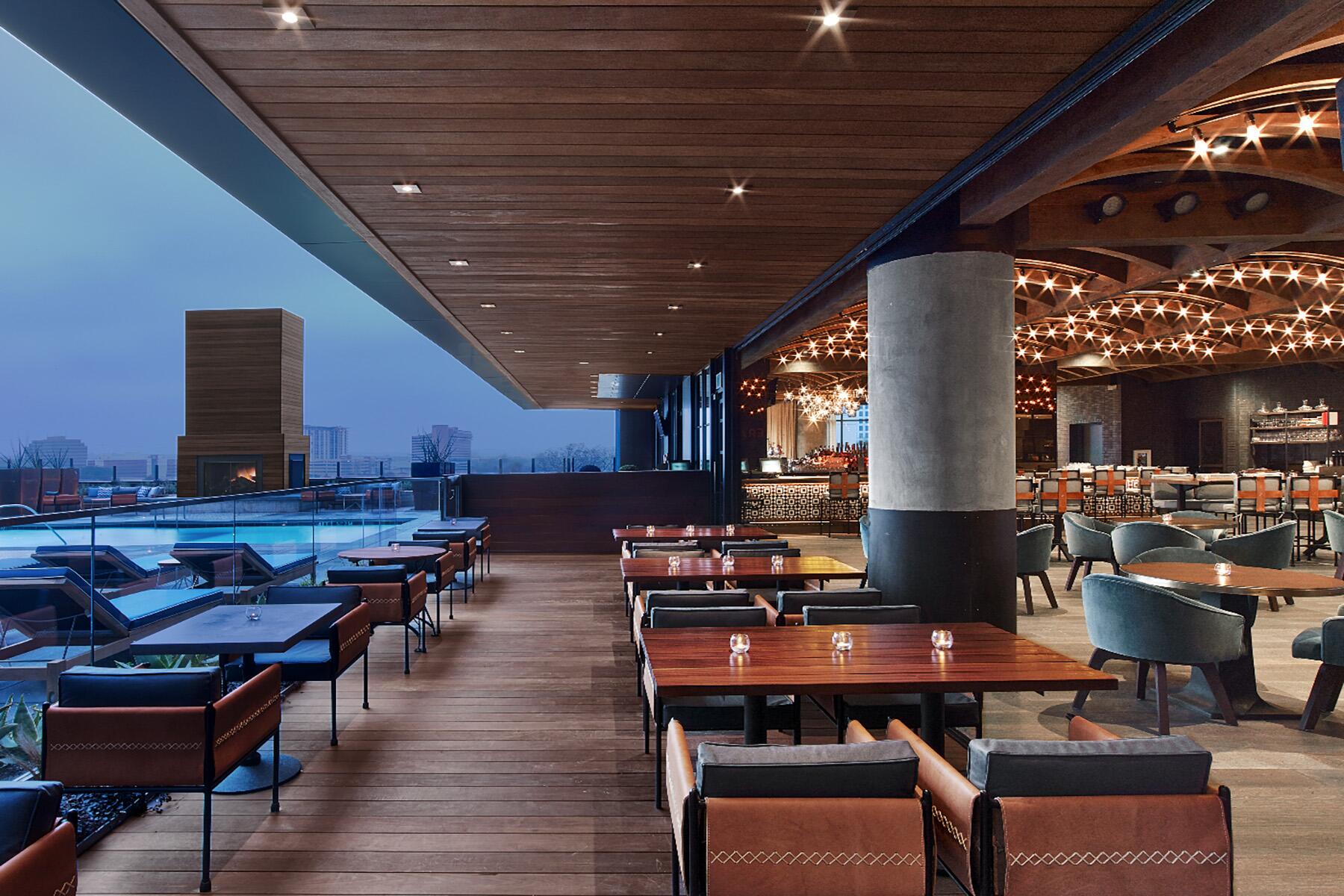- ⁄
- Travel News
- ⁄
- Bites
If you're going to San Francisco, be sure to try these homegrown treats.
From Rice-A-Roni to fortune cookies, San Francisco lays claim to an assortment of iconic foods—a testament to the contributions of immigrants from far and wide. One local bakery still uses a starter stemming from an 1849 gold miner. A spectacular seafood stew began with Italian fishermen who fished right off Fisherman’s Wharf (except it was called Meiggs’ Wharf back then). And when a Chinatown chef tossed together vegetables, meat, and egg in a wok, he invented a Chinese menu mainstay. Here are 12 delicious foods invented in the city by the Bay, a bit about their fascinating stories, and where to try them.
Sourdough Bread
No, sourdough wasn’t invented in San Francisco—it dates back to ancient times. But the distinctive sharp, chewy, tangy taste is pure San Franciscan. It happened during the Gold Rush, when gold miners rushed to California from Europe, Asia, and Australia. Many brought along jars of sourdough starter that promised a full belly when food was scarce. And a strange thing happened to the miners’ bread: It took on a sharper sourness, perhaps something to do with a strain of bacteria that could only thrive in San Francisco. Isidore Boudin, the son of French master bakers who had rushed to California to get rich on gold, capitalized on this natural phenomenon. Mixing French techniques with the miners’ starter, he kickstarted a family business—Boudin—which thrives to this day, still making its sourdough from a gold miner’s “mother dough.”
You can watch the breadmaking process and sample the yummy bread at Boudin Sourdough Bakery & Café at Fisherman’s Wharf.
INSIDER TIPA delicious take on sourdough bread are bread bowls, in which clam chowder, tomato, chili, and other hearty soups are served in a hollowed-out sourdough bread bowl. Boudin sells them, but you can also find them in seafood restaurants throughout San Francisco.
Crab Louie
When the temps are sizzling, one of the most satisfying meals is this popular ice-cold salad, incorporating Dungeness crab meat, tomatoes, iceberg lettuce, asparagus, hardboiled eggs, and Louis dressing (a mix of chili sauce and mayo). The origins are murky, but most researchers agree it was first served at Solari’s restaurant in 1914. Though some say it was head chef Victor Hirtzler who created it in 1910 at the St. Francis Hotel, calling it Crabmeat á la Louise. (And others say it was invented in Portland or Spokane, but we won’t go there.)
The best places to try it are the Swan Oyster Depot or Scoma’s at Fisherman’s Wharf.
Recommended Fodor’s Video
Irish Coffee
Maybe San Francisco didn’t invent Irish coffee, per se, but the city by the Bay sure popularized this cozy, whipped-creamy, whiskey-spiked coffee drink. The story goes: one November evening in 1952, Pulitzer-Prize-winning travel writer Stanton Delaplane was sitting at the bar of the Buena Vista Café on Hyde Street when the café’s owner, Jack Koeppler, challenged Delaplane to help duplicate the original, which the writer had tasted at Ireland’s Shannon Airport. They tried one concoction after the next, not quite getting it right. Finally, Koeppler returned to Shannon to ask the original inventor, Chef Joe Sheridan, for advice. Eventually, the recipe was perfected. Turns out there are two secrets: The cream needs to be aged for 48 hours before frothing to perfection; and the glass needs to be a clear, six-ounce, heat-treated goblet. It’s still served at Buena Vista Café, to the tune of some 2,000 servings a day.
Fortune Cookies
You can’t finish a Chinese restaurant meal without being served a traditional, sweet, crunchy, folded cookie with a secret message inside. But here’s a shocker: Many believe they cookies are Japanese in origin, not Chinese. The genesis is elusive, but a popular story cites Japanese-American Makoto Hagiwara first serving them in 1914 at what is now the Golden Gate Park Japanese Tea Garden. He based them on Japanese tsujiura senbei (“fortune cracker”), inside which he tucked thank you notes, not fortunes. Though another story has Chinese native David Jung in Los Angeles inventing them when he stuffed the cookies with Bible passages and handed them out to unemployed men in 1918. In 1983, the debate between the two bakers came to a head at a mock trial at San Francisco’s Court of Historical Review. Hagiwara won, and that’s good enough for us.
Try them at the Golden Gate Fortune Cookie Factory in San Francisco’s Chinatown, where you can also watch two women tucking fortunes into the cookies, and buy a box, including different flavors such as green tea and chocolate.
Cioppino
Italian fishermen invented this rustic tomatoey, wine-infused, seafood-filled stew in the early 1900s. Well, they didn’t actually invent the dish, but they added their own twist that makes it uniquely San Franciscan. They fished at Fisherman’s Wharf (then called Meiggs’ Wharf), and made ciuppin—the Italian fisherman’s stew whose name probably comes from the Ligurian word for “chopped”—with leftovers from their daily catch. The secret? San Francisco Bay’s delectable seafood, notably mussels, shrimp, clams, calamari, salmon, and/or cod, with Dungeness crab legs and claws sticking out of bowls as a decadent embellishment. It’s always served with sourdough bread to sop up the remains—and a bib. Try it at the Ferry Building’s Hog Island Oyster Co. (where it’s called “Rustic Seafood Stew”) and North Beach’s Sotto Mare, which many declare is the city’s absolute best.
Pisco Punch
In the Gold Rush’s aftermath, status was everything, so it goes to show that cocktails became status symbols. The elegant Bank Exchange and Billiard Saloon, which opened in 1854 with its marble bar and ornate chandeliers, became famed for its wildly popular Pisco Punch—for $25 a pop in today’s currency. The recipe was secret, but most people agreed its main ingredients included pisco, a clear-grape brandy exported from Peru long before the Gold Rush; lemon juice; and pineapple—and, get this, its deadly kick may have come from cocaine. Alas, the inventor bartender Duncan Nichol took his recipe to the grave in 1926. It stayed there until the 1970s, when the California Historical Society unearthed a version of the prized recipe, and bars began bringing it back (without the drugs).
Frankly, you won’t find it on many menus these days. Try North Beach’s Comstock Saloon, just a few blocks north of the original Bank Exchange (now occupied by the Transamerica Pyramid).
Green Goddess Dressing
Who gets a salad dressing named in their honor? George Arliss, that’s who. The English actor was staying at the Palace Hotel while starring in The Green Goddess, the most popular Broadway play of the 1920–21 season (it later became one of the earliest “talkie” movies). Chef Philippe Roemer got inspired to prepare a special dish at the banquet honoring the actor, and Green Goddess dressing—a creamy ensemble of mayo, fresh parsley, chives, white-wine vinegar, sour cream, and anchovy fillets—was born, served over canned artichokes. Some say it was a modern take on sauce au vert, a green sauce popularized in French king Louis XIII’s court, spooned over smoked or grilled eel. Whatever the case, its popularity took off, even appearing in bottles on grocery store shelves in the 1960s. Today, it’s more of a southern tradition, accompanying fried oysters and other shellfish.
Try it, of course, at the Palace Hotel’s Garden Court, where it’s still being served. Better yet, get an updated version at Wayfare Tavern.
INSIDER TIPChicken Tetrazzini was also invented at the Palace Hotel, in honor of opera singer Luisa Tetrazzini, who gave a free concert in San Francisco on Christmas Eve, 1910. These days, however, it’s mostly found in the frozen-food aisle of your local department store.
Ghirardelli Chocolate
Here’s another one that came to San Francisco by way of the Gold Rush, and how delicious it is! The story goes back to Domingo Ghirardelli who, after learning the chocolate trade as a young boy in Italy and Peru, sailed to America in 1849 to prospect for gold. He failed at that, but he opened several general stores in Stockton then San Francisco, where he sold chocolate and supplies to miners. Thus, a star was born. The Ghirardelli Chocolate Company was founded in San Francisco in 1852 (it was called Ghirardely & Girard back then). In 1893, the company converted the Pioneer Woolen Building down by today’s Fisherman’s Wharf into its factory, where the illuminated “Ghirardelli Chocolate” sign still shines bright. The bulk of the chocolate these days is made in nearby San Leandro, but you can still come to the Original Ghirardelli Ice Cream & Chocolate Shop, occupying the historic factory building, for what’s got to be the best hot fudge sundae around (the fudge is made fresh daily). The new chocolate fountain is pretty cool, too.
Rice-A-Roni
Anyone growing up between the 1960s to the 1990s remembers the TV commercial with the cable car chugging up California Street and the jingle declaring, “Rrrrice-A-Roni, the San Francisco Treat!” But does this boxed side dish, combining pasta and rice, really have roots in San Francisco? Yes! It started with the DeDomenico family, Italians who immigrated to the city in the 1890s. They opened a pasta company called Gragnano Products Inc. Fast-forward to post-World War II, when Lois, the wife of one of the sons (they all were in the business) learned to cook rice pilaf from an Armenian neighbor, which she made for her family. That sparked the creation of a boxed version in 1958, which took the country by storm. While no restaurant really specializes in it, Fort Point Beer Co.’s Valencia Street brewpub serves an amazing Rice-A-Roni arancini with Dungeness crab. And, of course, you can still find it on grocery-store shelves.
Chop Suey
The origins of this chopped-up-meat-and-vegetable-and egg dish, once again, are hazy, but considering that San Francisco’s Chinatown was the epicenter of the Chinese community since the Gold Rush and much of what became Chinese-American food was invented there, there’s credence. One story goes that chop suey came about when a Chinatown chef in the 1860s was trying to serve some drunk miners and tossed a bunch of kitchen leftovers into a wok. Or maybe it happened at the Palace Hotel, where Chinese leader Li Hung Chang was staying on his San Francisco visit in the 1890s. He requested a dish of meat and vegetables that was “job suey” or “in fine pieces.” Thus, chop suey was born.
Whatever the case, you won’t find it in China, but you’ll find it at restaurants throughout San Francisco’s Chinatown, including the legendary Sam Wo, established in 1908.
INSIDER TIPChop suey wasn’t the only Chinese-American dish invented in San Francisco. Egg foo yung, moo goo gai pan, shrimp and lobster sauce are some of the other dishes derived there.
Mission Burrito
There are burritos, and there are Mission burritos: Oversized tortillas stuffed with pinto beans, rice, meat, cheese, guacamole, sour cream, onions, and/or many other choose-your-own delectable additions. The main thing is that these burritos are huge. No one knows exactly who created the first Mission burrito, though it definitely was in San Francisco’s Mission District, a strong Latino community since the 1960s. Maybe it was Febronio Ontiveros at El Faro in 1961, when he made a bunch for a group of firemen. Or perhaps it was Michaela Duran, at Taqueria El Cumbre in 1967. Whatever the case, its fame skyrocketed when Chipotle Mexican Grill first opened in Denver in 1993, featuring the oversized tortilla.
Try them at Taqueria El Farolito, which took the original recipe and perfected it; and Señor Sisig, a Filipino-American food truck that’s taken Mission burritos to a whole new, Filipino-infused level (adobo garlic rice and cilantro cream sauce are some of their offerings).
It’s-It
Maybe only Californians know about this summer treat—but the rest of the world should get clued in. It’s-Its are ice cream sandwiches, but not just any ice cream sandwich. Two old-fashioned oatmeal cookies (no raisins, please) sandwich a scoop of vanilla ice cream, all dipped in dark chocolate. As you try to eat this heavenly ensemble, the ice cream runs down your arms and the soft cookies bravely try to hold the whole thing together, until finally you have to cave in and take quick bites, nipping at the ice cream and cookies to make sure nothing drops to the ground. George Whitney invented this sweet concoction in 1928, and it became an immediate hit at San Francisco’s Playland-in-the-Park. The park closed in 1972, but this special San Francisco treat is still available at supermarkets in select states (and they can be shipped throughout the U.S.). These days, they come in a variety of flavors, including pumpkin, green tea, and cappuccino, but come on—there’s only one original It’s-It!






